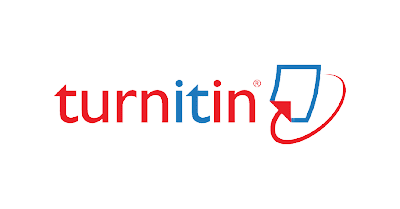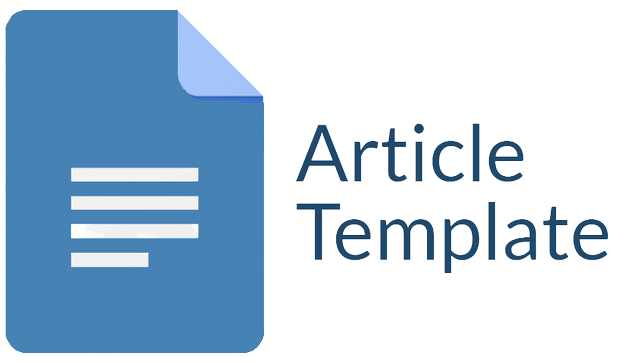PENGEMBANGAN DASHBOARD MONITORING CELAH KEAMANAN PADA CLUSTER KUBERNETES DENGAN METODE CONTAINER IMAGES SCANNING
Abstract
Salah satu bentuk perkembangan teknologi dalam industri teknologi informasi adalah penerapan micorservice dan containerization. Containerization telah menjadi cara yang efisien untuk meningkatkan produktivitas dalam proses pengembangan teknologi informasi berbasis microservicess. Namun seiring dengan peningkatan penggunaan container application, diiringi juga dengan peningkatan potensi celah keamanan seperti konfigurasi yang kurang tepat, kerentanan pada perangkat lunak, malware dan lain lainnya yang terdapat pada container. Oleh karena itu diperlukannya sebuah pencegahan untuk mengurangi celah keamanan pada container images. Salah satu bentuk pencegahan tersebut adalah dengan menerapkan container images scanning. Trivy Operator merupakan salah satu aplikasi container images scanning yang dapat berjalan pada suatu cluster. Tidak hanya itu Trivy Operator menyediakan laporan celah keamanan dalam bentuk metrics. Dengan bantuan aplikasi Prometheus dan Grafana, laporan celah keamanan yang dihasilkan dapat diolah menjadi sebuah dashboard agar mempermudah dalam melakukan kegiatan monitoring. Hasil akhir pada proyek ini adalah sebuah dashboard monitoring menggunakan data celah keamanan yang berasal dari container images scanning.
Downloads
References
Awanda Alviansyah, F., & Ramadhani, E. (2021). Implementasi Dynamic Application Security Testing pada Aplikasi Berbasis Android.
Berkovich, S., Kam, J., & Wurster, G. (2020, August). UBCIS: Ultimate Benchmark for Container Image Scanning. 13th USENIX Workshop on Cyber Security Experimentation and Test (CSET 20). https://www.usenix.org/conference/cset20/presentation/berkovich
Burns, B., Beda, J., Hightower, K., & Evenson, L. (2022). Kubernetes: Up and Running. O’Reilly Media. https://books.google.co.id/books?id=KeB-EAAAQBAJ
Chen, L., Xia, Y., Ma, Z., Zhao, R., Wang, Y., Liu, Y., Sun, W., & Xue, Z. (2022). SEAF: A Scalable, Efficient, and Application-independent Framework for container security detection. Journal of Information Security and Applications, 71, 103351. https://doi.org/https://doi.org/10.1016/j.jisa.2022.103351
Danuri, M. (2019). PERKEMBANGAN DAN TRANSFORMASI TEKNOLOGI DIGITAL.
Iksyam, laode G. N., & Paputungan, I. (2024). PENGEMBANGAN APLIKASI MECHA: LAYANAN PERBAIKANKENDARAAN BERBASIS SMARTPHONE MENGGUNAKAN MVP(MODEL VIEW PRESENTER) SEBAGAI DESIGN PATTERN. https://doi.org/10.47668/edusaintek.v11i1.932
Jaisinghani, G. (2022). Vulnerability Management in the Age of Containers. https://doi.org/10.17605/OSF.IO/WJSV6
Kaur, B., Dugré, M., Hanna, A., & Glatard, T. (2021). An analysis of security vulnerabilities in container images for scientific data analysis. GigaScience, 10(6), giab025. https://doi.org/10.1093/gigascience/giab025
Mutiara, R., Politeknik, F., & Jakarta, N. (2020a). IMPLEMENTASI SISTEM MONITORING MENGGUNAKAN PROMETHEUS DAN GRAFANA. https://www.researchgate.net/publication/342511231
Mutiara, R., Politeknik, F., & Jakarta, N. (2020b). IMPLEMENTASI SISTEM MONITORING MENGGUNAKAN PROMETHEUS DAN GRAFANA. https://www.researchgate.net/publication/342511231
Newman, S. (2021). Building Microservicess (2nd ed.). O’Reilly Media, Inc.
Oktaviana, M., Widjajarto, A., & Almaarif, A. (2022). Analisis Vulnerability Management Pada Container Docker Menggunakan Opensource Scanner Berdasarkan Standar Cyber Resilience Review (CRR). Jurnal Sistem Komputer Dan Informatika (JSON), 4(1), 77. https://doi.org/10.30865/json.v4i1.4787
Perkasa, P. R., & Mailoa, E. (2023). ADOPSI DEVSECOPS UNTUK MENDUKUNG METODE AGILE MENGGUNAKAN TRIVY SEBAGAI SECURITY SCANNER DOCKER IMAGE DAN DOCKERFILE. Jurnal Indonesia : Manajemen Informatika Dan Komunikasi, 4(3), 856–863. https://doi.org/10.35870/jimik.v4i3.291
Putra, R. A. (2019). ANALISA IMPLEMENTASI ARSITEKTUR MICROSERVICESS BERBASIS KONTAINER PADA KOMUNITAS PENGEMBANG PERANGKAT LUNAK SUMBER TERBUKA (OPENDAYLIGHT DEVOPS COMMUNITY). Teknologi Informasi dan Komputer. https://jurnal.umj.ac.id
Rahman, D., Amnur, H., & Rahmayuni, I. (2020). Monitoring Server dengan Prometheus dan Grafana serta Notifikasi Telegram (Vol. 1, Issue 4). https://doi.org/https://doi.org/10.30630/jitsi.1.4.19
Suryotrisongko, H. (2017). Arsitektur Microservices untuk Resiliensi Sistem Informasi. Sisfo, 06(02), 231–246. https://doi.org/10.24089/j.sisfo.2017.01.006
Copyright (c) 2024 Muhamad Riko Bediatra, Sri Kusumadewi

This work is licensed under a Creative Commons Attribution-ShareAlike 4.0 International License.
Jurnal allows anyone to compose, correct, and do derivative works, even for commercial purposes, as long as they credit for the original work. This license is the freest. It is recommended for maximum distribution and use of licensed material.
The submitted paper is assumed not to contain any proprietary materials that are not protected by patent rights or patent applications; The responsibility for technical content and protection of proprietary materials rests with the authors and their organizations and not the responsibility of journal or its editorial staff. The primary (first/appropriate) author is responsible for ensuring that the article has been viewed and approved by all other authors. The author's responsibility is to obtain all necessary copyright waivers to use any copyrighted material in the manuscript before submission.
Jurnal Pendidikan, Sains dan Teknologi allows the author(s) to hold the copyright without restrictions and allow the author(s) to retain publishing rights without restrictions. Jurnal Pendidikan, Sains dan Teknologi CC-BY-SA or an equivalent license as the optimal license for the publication, distribution, use, and reuse of scholarly work. Jurnal Pendidikan, Sains dan Teknologi allows the author(s) to hold the copyright without restrictions and allow the author(s) to retain publishing rights without restrictions. Jurnal Pendidikan, Sains dan Teknologi CC-BY-SA or an equivalent license as the optimal license for the publication, distribution, use, and reuse of scholarly work.
In developing strategy and setting priorities Jurnal Pendidikan, Sains dan Teknologi recognize that free access is better than priced access, libre access is better than free access, and libre under CC-BY-SA or the equivalent is better than libre under more restrictive open licenses. We should achieve what we can when we can. We should not delay achieving free in order to achieve libre, and we should not stop with free when we can achieve libre.
Jurnal Pendidikan, Sains dan Teknologi is licensed under a Creative Commons Attribution-ShareAlike 4.0 International License.
You are free to:
- Share a copy and redistribute the material in any medium or format
- Adapt a remix, transform, and build upon the material for any purpose, even commercially.
- The licensor cannot revoke these freedoms as long as you follow the license terms.






